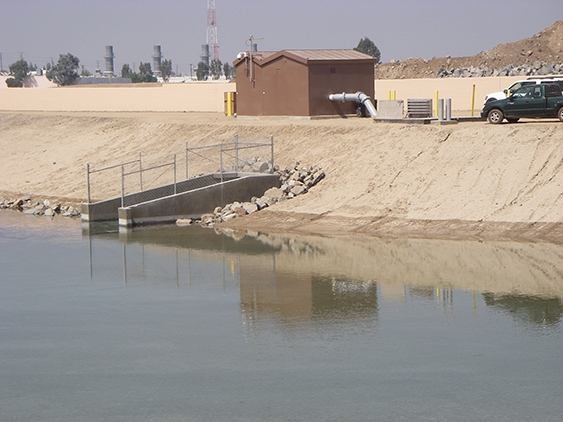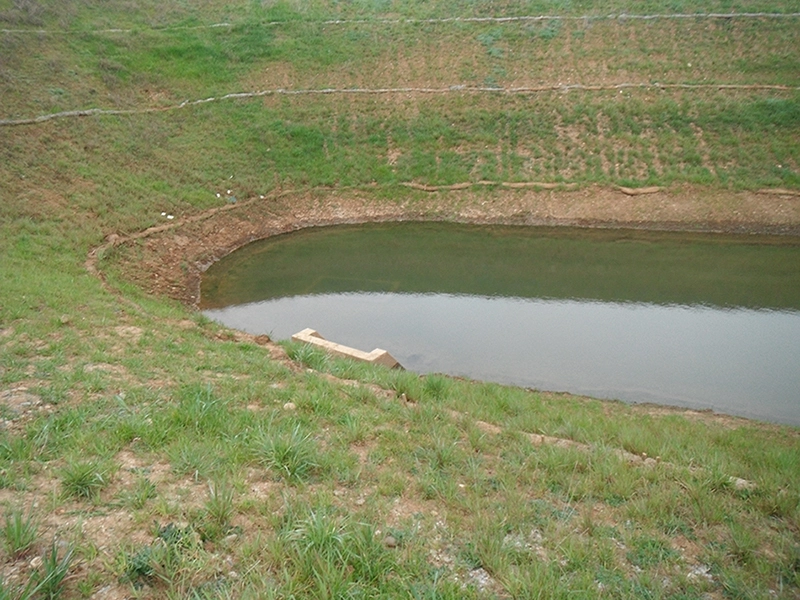
Romtec Utilities can design, supply, and construct complete pumping systems for virtually any application. Typically, a Romtec Utilities design includes everything between in the inlet pipe and the discharge pipe; however, frequently customers ask us to provide intake and/or discharge structures for their systems. These structures can range from simple prefabricated units up to sophisticated mechanical systems. Intake and discharge structures are designed to improve the long-term functionality of a pumping system and/or the downstream treatment or discharge facilities.
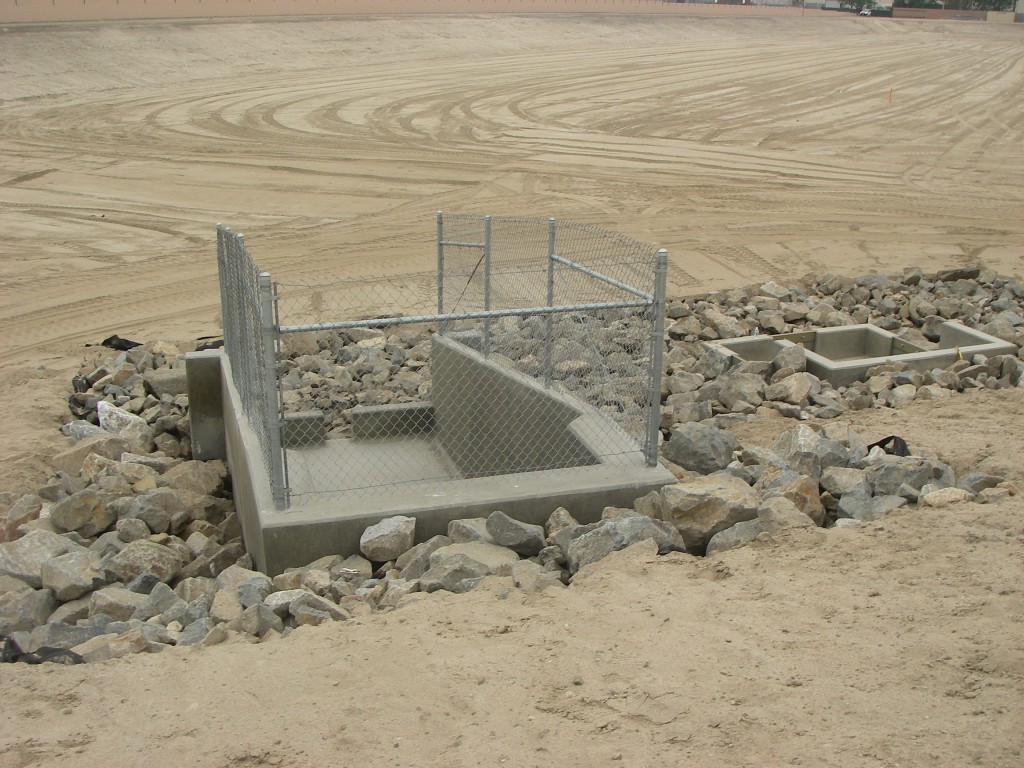
Intake structures can principally be broken down into two categories, those that intake from a pond or standing body of water and those that intake flowing water from a line or ditch. Intake structures from a standing body of water can intake from the side of the pond or from the bottom. In both scenarios the intake structure will have to account for solids and grit/dirt. Solids and grit will increase the maintenance needs of a pump station, so it is better to keep them out of the system all together. There are several methods for screening out these materials at the intake structure such as with weir walls and bar screens.

When intake structures are installed on a line or ditch, the technologies for screening solids can range dramatically in price and sophistication. It is important to first establish the source of the flow. If the water is from a large commercial parking lot, then pollutants such as refuse, oil, grit, heavy metals, and more might all be present in the stormwater runoff. These pollutants can sometimes interfere with water treatment and must be screened out prior to pumping. They can also damage the pump station. Technologies such as bar screen vaults, centrifugal separators, weir walls, mechanical separators, shredders, and more can all be included in these types of intake structures.
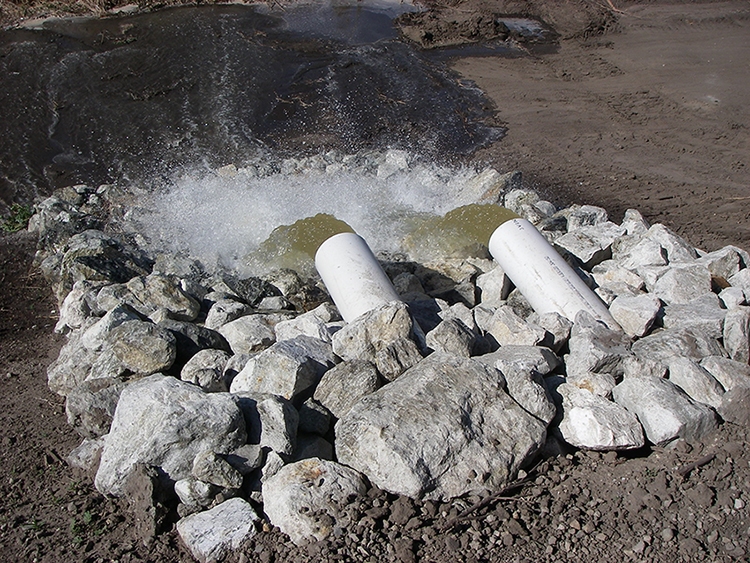
Outlet or discharge structures are typically designed as either storage devices or erosion control, but discharge structures may also be required when discharging into a street or accessible area. For these latter applications, the structure will typically function as an energy dissipation devices. All that means is that it slows the water down prior to or at the point of discharge. The simplest form of an energy dissipating structure is large boulders or concrete that cover the discharge location. The rock surfaces absorb the energy from the discharging fluid and prevent it from eroding other surfaces. Large rocks and other baffles can also be included in a vault structure if the discharge location cannot be built on or modified. There are many methods for energy dissipation on discharge structures and the design will depend on the specific needs of the site.
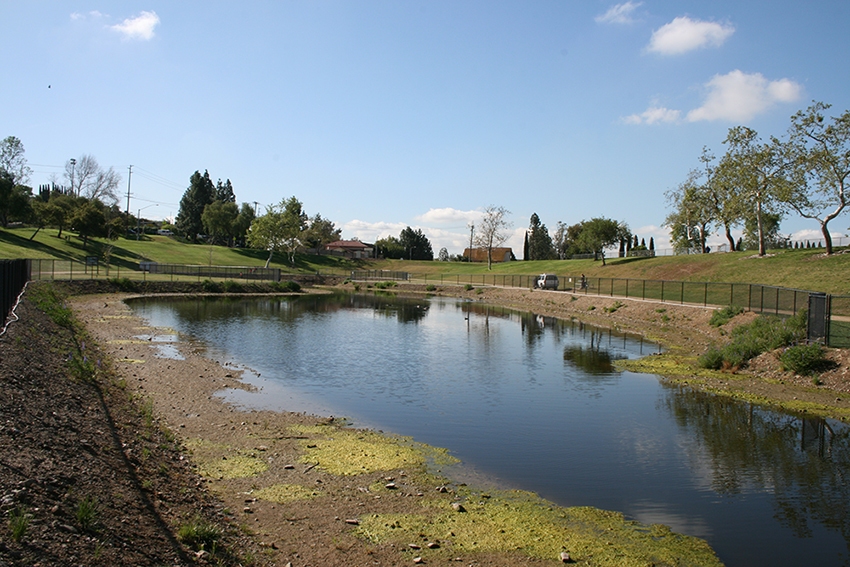
Storage outlet structures can be retention ponds or tanks. These can be used for several purposes. A common reason for using retention ponds or storage tanks is delaying a stormwater from flowing to treatment. Often times, water treatment plants can be overwhelmed by large stormwater events as the water flows to the facility. Storing the water temporarily is often times a great way to keep the treatment facility from becoming overwhelmed. This type of design can be used with stormwater and wastewater systems as a failsafe to protect the treatment facility.
There are many different ways to design and construct intake and discharge structures. To get the best design, it is important to understand the specific needs of your site and to apply the appropriate technologies. Romtec Utilities has the capabilities to design and supply pumping systems with many types of intake and outlet structures. Contact Romtec Utilities today to see how we can include these components into a pump station design to meet you site-specific requirements.

